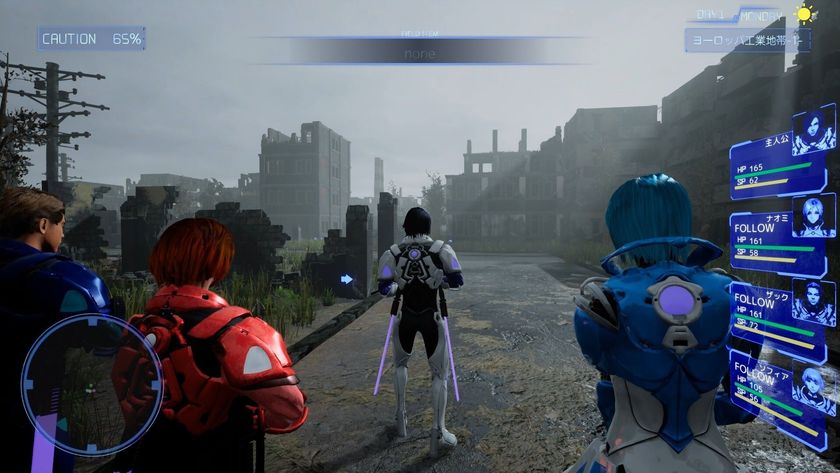Rage: art secrets of id's post-apocalyptic shooter, straight from the dev
id's art director offers an exclusive look at the visuals behind one of next year's biggest games
The latest issue of fantasy and sci-fi digital art magazine ImagineFX takes a look at id's in-development shooter/racer hybrid, Rage. The game's art director, Stephan Martiniere, explains the process of creating concept art for the game. Even if art isn't primarily your thing, as a gamer you'll find it's still a fascinating behind-the-scenes look at what is destined to be one of 2011's biggest releases. Luckily, ImagineFX are our friends and we're able to share the entire article with you here:
In the second half of our game RAGE I wanted to introduce something visually different. As the tension in the story builds up I was keen for the environment to reflect that tension and give the player a sense of danger. The clear blue sky from earlier in the game gradually changes and is overshadowed by ominous dark clouds, while the sand colour shifts from beige to red. I also wanted to open up the landscape and introduce new architectural elements not seen in the other part of the world, as well as reinforce the game’s post-apocalyptic feel.
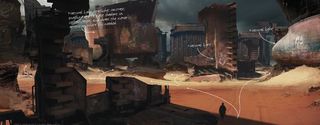
Above: Stephan Martiniere's Rage concept art. Click the image to make it lovely and big
I started from the idea of dried-up sea beds and was imagining devastated coastlines and ruined shipyards. A graveyard of boats seemed like a great idea. Carcasses of cargo ships buried in the sand would replace canyon walls and give the player a new visual experience.
This particular painting (above) was the first one to introduce and explore the visual language such as mood, light, texture and detail that would define the second part of the game. This image was also a narrative exploration. I tend to consider the visuals and the gameplay intricately connected. As such, the visual vocabulary is used for aesthetic purposes, but is also used to instill a broader and more immersive feeling.
Research and references
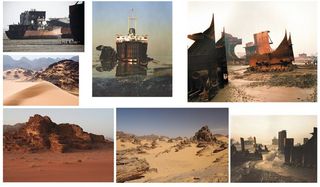
The first step is to undertake some research. I spend several days looking for references of ships and deserts, and anything that relates to the ideas I have in mind for the scene. I never take anything for granted. There are some incredible references on the web or in books and I’m always looking for something that would surprise and inspire me – as well as the player!
Sign up to the 12DOVE Newsletter
Weekly digests, tales from the communities you love, and more
How I create a metal canyon

Warning signs: Graffiti is a big part of the RAGE landscape. They are the territorial markings of several bandit clans infesting the land. From a gameplay standpoint they give the player some clues and warnings, but they also bring some colour accents to the monochromatic palette
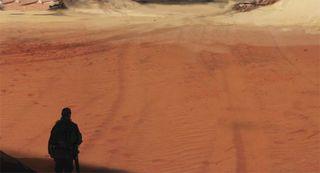
Vehicular activity: Other details such as tyre marks are a good visual clue to tell the player where to go, as well as introducing human presence. Detail such as oil stains or trash add scale to the scene and also add realism and narrative.
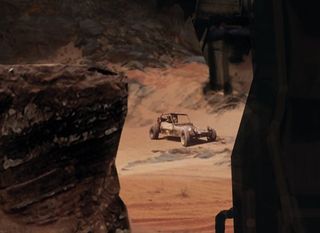
Down to size: I always put a character or a recognizable element to set the scale, sometimes several elements might be necessary when the scene is complex.
This feature is taken from ImagineFX magazine’s video game art special. In the issue you’ll find advice on how to kick-start your career as a video games artist, with workshops from artists that have worked on Crysis 2, Enslaved: Odyssey to the West, Fallout: New Vegas and much more. The issue is on sale now and costs £5.99. VisitImagineFXfor more info.
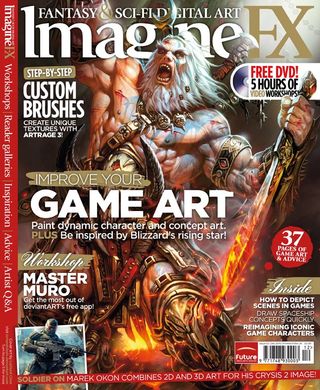
ImagineFX is the only magazine for fantasy and sci-fi digital artists. Each issue contains an eclectic mixture of in-depth workshops from the world's best artists, galleries and interviews, features, community news, software and hardware reviews, and the latest sci-fi and fantasy films and comics.
October 21, 2010
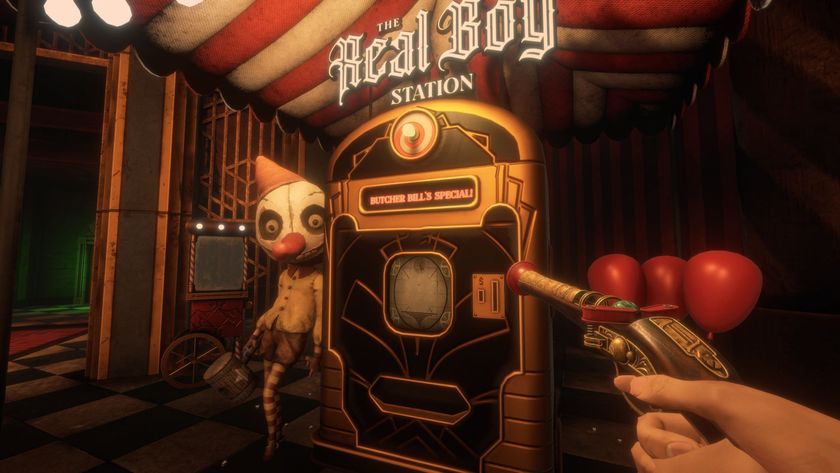
OG BioShock director recommends one very BioShock-y Steam Next Fest game that already has 500 "very positive" reviews
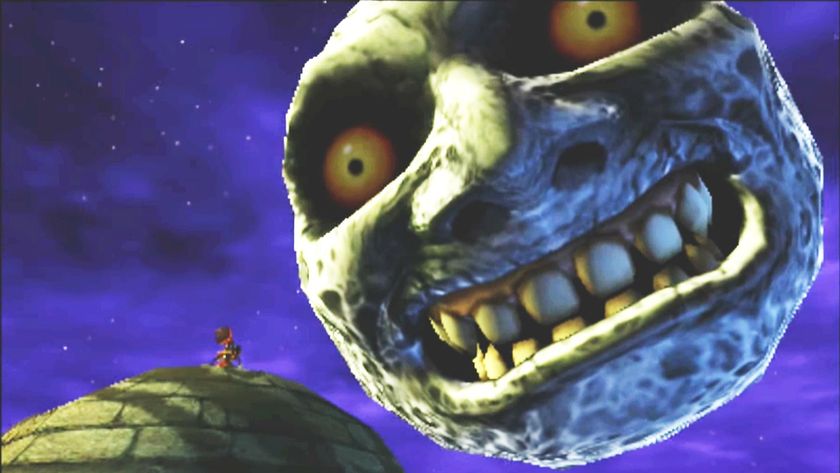
Despite Zelda: Majora's Mask basically being a horror game, one of its key devs didn't think its creepiest features were scary at all: "People on the team were like 'whoa!'"
Most Popular





